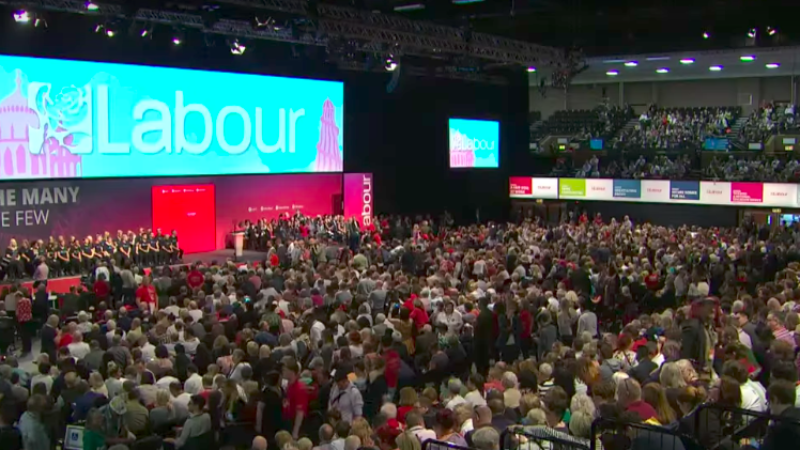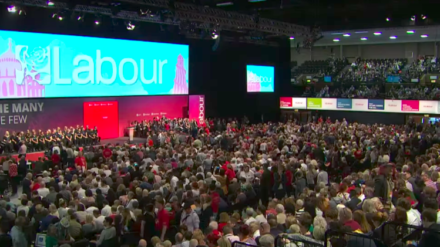

Labour Party annual conference was an unusual experience for people with my politics.
For the first time since 1981 there was a clear majority of delegates from the Hard Left.
Those of us not from this tradition have to adjust psychologically to our ideas and people being in the minority for the foreseeable future given that Jeremy Corbyn’s relative success in the general election means he will be leader for as long as he wants to be.
The only model that we have is the behaviour of Corbyn and his colleagues during the last three decades. But that doesn’t quite mirror to our current situation as – whilst the proportions of delegates on conference floor and control of CLPs may have flipped – the centre-left continues to dominate the Parliamentary Labour Party and local councils, meaning that we have nodes of organisational power within the party that the Hard Left never had between the mid-1980s and 2015.
For instance, the NEC is currently balanced 18 votes to 18, with the one-member-one-vote election for the three new CLP seats created at conference due to decide control. As recently as 2012, the Hard Left was lucky to muster three votes on a then 33-member NEC. The centre-left may be a minority but we are a relatively strong one.
The centre-left are instinctive loyalists and followers of the whip, so acting as rebels like Corbyn and co did – publicly criticising the leadership and repeatedly breaking the whip in parliamentary votes – cuts against the grain of who we are.
We need to develop a way of being the minority that stays true to who we are, and the policies and values we believe in, and which enables us to contest internal selections and elections within the party and speak out when we think the leadership is wrong, as well as to freely develop our own new ideas, candidates and leaders for the future. And we need to do this without undermining the leadership, rejecting democratic decisions, or damaging Labour’s electoral prospects. Getting that balance right will be difficult.
But these conundrums are implicit in a political system like Britian’s, where the 45 per cent vote share required to form a parliamentary majority under first-past-the-post forces the two main parties to include people with radically divergent views.
Aspects of conference hint at attitudes that will make keeping Labour pluralistic difficult.
Traditionally, very few conference delegates were factionally aligned, as outside the major cities there was no factional organisation because CLPs were too small to internally divide, and a couple of decades of nothing very much important happening at conference meant that in most CLPs delegates were elected uncompetitively, the slot going to the person whose Buggins turn it was to get a week drinking warm white wine by the seaside, or the only person enthused enough to want to go.
Culturally pre-2015 Labour activists didn’t like taking orders from anyone. They liked to listen to the speeches and make up their own minds. Trying to get them to follow a factional line would have been like herding cats. So conference involved a lot of effort charming, persuading and enthusing delegates to vote with the leadership. It was also internally unpredictable – from 1997 to 2006 the same delegates would cheer Gordon Brown to the rafters on a Monday and mutter in bars about how they wanted him to oust Blair, then be swept off their feet by Blair’s Tuesday afternoon speech. In 2014, delegates were so open-minded they used the same ballot paper to elect two national constitutional committee members from rival slates with diametrically opposite politics.
Conference 2017 saw the emergence of microchip Labour – delegates who appear to follow the voting instructions issued via Momentum’s conference app robotically and in contradiction to their own views. So although all the polling suggests Momentum supporters are pro-Remain and pro-immigration internationalists, they voted en bloc not to prioritise Brexit as one of the four topics chosen by CLP delegates for contemporary motion debates, so no vote could be taken on the subject.
And, although some Momentum supporters gave standing ovations to anti-Zionist speakers who condemned the Jewish Labour Movement and indulged in tropes about Zionist collusion with the Tory press, they then voted overwhelmingly for a rule change on tackling antisemitism that those speakers had been railing against. In both cases factional loyalty trumped the gut instincts of the delegates.
Even though the result of the antisemitism rule change was desirable, there is something quite alarming about this degree of regimentation. It makes it difficult to win arguments and persuade delegates if they are listening more to what one factional chief is telling them than to the actual debate they are hearing in the hall.
In some regards the behaviour of Momentum at conference was like the final scene of Animal Farm. They have become many of the things they most hated about conference in the Blair years: control-freakery; a rally rather than a debate; adulation of the leader (not that I can talk, my year as Labour Students National Secretary saw the sale of hundreds of t-shirts branded “Blair” in the same lettering as the Blur logo); disregard for dissenting opinions; manipulation of the priority ballot to avoid debates on issues problematic to the leadership; biased chairing; a crude attempt to deny mayor of London Sadiq Khan the right to speak. All quite remarkable for people who stood outside conference for 30 years complaining about stitch-ups.
References to having “won” on June 8 make us look like a party of the delusional and don’t reflect the reality that we have lost a third general election in a row and the Tories and DUP are imposing deeply reactionary policies. It doesn’t take much subtlety or nuance to celebrate our unexpected advance and still ask the serious questions about why we lost and what needs to change for us to win.
But at the same time as all this was going on, some old habits die hard. Every morning conference was disrupted for the best part of an hour by interminable procedural motions to reference back the conference arrangements committee report and overturn the agenda. Why mess up the annual showcase for your own leader and policies?
And a rule change passed last year – when the Hard Left still felt it was a voiceless minority – which enabled sections of policy documents to be “referenced back” is the worst nightmare of any conference business manager: spontaneous votes happening which are difficult to control and which disrupt the coherence of policymaking. Again why would you do this now your side are the policymakers?
Looking further ahead, the quality of and response to the different shadow cabinet speeches gives some grounds for suspecting that while the Momentum contingent – who made up about 70 per cent of CLP delegates – are devoted to Corbyn, their allegiance to the Hard Left more generally might become fluid when Jeremy eventually retires.
There did not seem to be any MP directly identified with Momentum capable of enthusing the crowd while at the same time meeting the new threshold for nominations from 10 per cent of the PLP and EPLP (29 MPs and MEPs) to earn a place on a leadership ballot.
In contrast, the three shadow cabinet members who got tumultuous standing ovations were Emily Thornberry, Jonathan Ashworth and Angela Rayner, all associated with the soft left or centre of the party and all capable of getting 29 MPs and MEPs signed up. So the net result of this roller-coaster journey may be to land us back ideologically and politically about where we started with Ed Miliband. Which is, after all, how roller-coasters work.




More from LabourList
‘Lammy has shattered Labour’s Brexit omerta and reopened discussion on relations with the EU’
Fair pay agreement for care: The most radical policy no-one’s heard of
‘Rushing a UK–EU customs union now would undermine real progress’